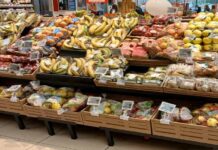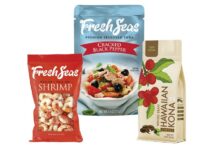Do you know that the low-density polyethylene – LDPE resins market across the world is witnessing prominent growth due to flexible packaging, films, and sheets?
There is a report rolled out by Persistence Market Research, which states that the CAGR pertaining to the LDPE resins market is all set to see a growth of 4.6%, thereby increasing the market value from almost $40.25 billion in 2024 to an anticipated $55.15 billion by 2031.
All thanks to LDPE’s application across numerous sectors such as consumer goods, industrial uses, and even food packaging, this growth is inevitable.
What are the key drivers of this segment?
One thing we can think of is the rising environmental concerns and shift towards more sustainable packaging solutions. In addition to these advancements in production technologies, this can also be one of the reasons why this market is witnessing an expansion like this.
One cannot deny the fact that LDPE is durable and lightweight, and its non-toxic properties make it the material of choice when it comes to numerous manufacturers.
There are also innovations that are taking place when it comes to packaging solutions, like multi-layered films that are driving more LDPE resin usage, especially when we talk of agriculture and food packaging.
Who is leading the segment of the LDPE resin market?
The films and sheets application are indeed making its way to the pole position when we talk of the LDPE resins market segment. Geographically, this market is led by North America because of a strong industrial infrastructure, rising demand for sustainable packaging solutions, and, of course, advancements in technology.
How about the market segmentation?
The LDPE resins market can be based on
- Product Type
- Application
- Regional trends
In terms of technology, the market is essentially divided into autoclave and tubular, where the former remains popular when it comes to producing high-quality resins that have uniform thickness, whereas the latter are more efficient in terms of large-scale production and higher-volume applications.
There is one more key segment, which is based on application, which includes films and sheets, injection molding, and extrusion coating.
There is a wide use of films and sheets in agriculture, packaging, and medical products, whereas the extrusion coating segment is growing at a steady pace driven by rising demand for protective coating across various sectors such as construction and automotive. When it comes to injection molding applications, they are gaining ground in the production of consumer goods along with industrial components.
Regional perspectives
North America, the global LDPE resins market, due to a robust industrial infrastructure and, of course, rising consumer awareness pertaining to sustainable packaging solutions. Asia, especially China and Japan, is witnessing very fast growth in the LDPE resins market. The former, for that matter, is the world’s largest consumer of plastics and hence is a major contributor to the LDPE resins demand.
The key market drivers
The rising demand when it comes to flexible packaging is a very crucial driver. It is well to be noted that LDPE resins are perfect for lightweight, flexible, and durable packaging materials, especially when it comes to the food and beverage industry. As one can increasingly witness a boom in the e-commerce segment across the world, the need for cost-effective, efficient, and sustainable packaging solutions is also growing. The rising bent towards sustainability is also throttling the LDPE resins market. As there are more environmental concerns, companies are reeling under a lot of pressure to adopt sustainable packaging options.
Market barriers
In spite of the unprecedented growth prospects, there are certain barriers too that the LDPE resins market is facing. To start with, there are the raw materials. Prices have been fluctuating pretty often, and they can actually affect the production cost. Moreover, crude oil as well as natural gas, which are key raw materials when it comes to LDPE production, are often subject to volatile pricing, which can also cause a disruption in the supply chain and hence raise the manufacturing cost.
Also, while LDPE happens to be recyclable, the improper disposal of plastic waste goes on to pose an environmental hazard, thereby leading to strict norms and rising pressure on manufacturers to keep themselves abreast with eco-friendly production methodology. This is indeed a challenge and also an opportunity for innovation.
What are the opportunities?
Expansion of the biodegradable and sustainable packaging sector. This is indeed a major opportunity for growth in the LDPE market. As consumers push for greener alternatives, demand for environmentally friendly packaging is witnessing an unprecedented rise, and LTPE products are expected to gain from it. There are also new market avenues for LDPE resins, such as advancements in recycling technology and also the development of biodegradable resins.



























